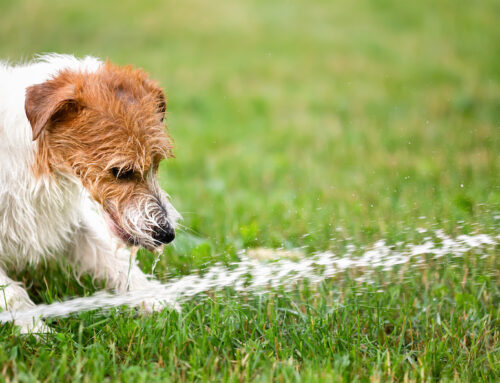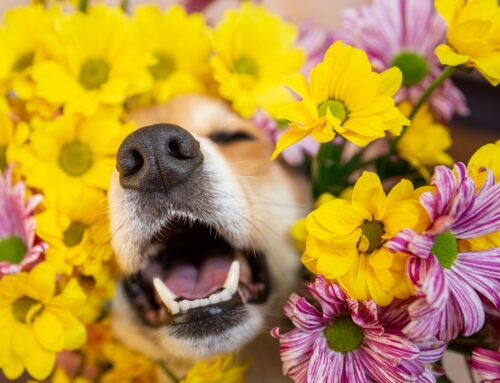Pet anxiety is a common concern among pet owners, with various factors contributing to its development. Whether it’s separation anxiety, fear of loud noises, or past traumatic experiences, understanding the underlying causes is crucial for effectively managing pet anxiety. In this article, we’ll explore practical strategies to help your furry friend feel calmer and more secure, leading to a happier and healthier life.
Causes of Pet Anxiety
Pet anxiety can be caused by various factors, including changes in their environment, separation from their owners, loud noises such as thunderstorms or fireworks, unfamiliar situations or places, past traumatic experiences, lack of socialization, and underlying medical conditions.
Additionally, certain breeds may be more prone to anxiety due to genetic predispositions. Each pet is unique, so what triggers anxiety in one animal may not affect another in the same way. Understanding the specific triggers and underlying causes of your pet’s anxiety is crucial for effectively managing and addressing their distress.

Managing Pet Thunderstorm Anxiety
To prevent or reduce your pet’s anxiety during thunderstorms, you can try the following strategies:
- Create a Safe Space: Designate a safe area in your home where your pet can retreat during storms. This space should be quiet, comfortable, and preferably windowless to minimize exposure to the storm’s sights and sounds. Provide familiar bedding, toys, and items with your scent to help your pet feel secure.
- Use Sound Therapy: Play calming music or white noise to mask the sound of thunder and lightning. Classical music or specially designed pet relaxation tracks can help drown out the noise and create a soothing atmosphere for your pet.
- Provide Distractions: Keep your pet occupied with interactive toys, puzzle feeders, or engaging activities to redirect their focus away from the storm. This can help alleviate their anxiety and prevent destructive behavior.
- Offer Comfort: Comfort your pet with gentle petting, cuddling, or soothing words to reassure them during the storm. Your presence can provide a sense of security and help calm their nerves.
- Desensitization Training: Gradually expose your pet to recordings of thunderstorms at low volume levels, gradually increasing the volume over time as they become more accustomed to the sounds. Pair these sessions with positive experiences, such as treats or playtime, to create positive associations with thunderstorm noises.
- Consider Thundershirts or Calming Products: Thundershirts, anxiety wraps, or calming pheromone diffusers can provide additional support for anxious pets during storms. These products work by applying gentle pressure to your pet’s body, which can have a calming effect similar to swaddling a baby.
- Consult with a Veterinarian: If your pet’s anxiety during thunderstorms is severe or persistent, consult with your veterinarian. They can offer personalized recommendations and may prescribe medications or supplements to help manage your pet’s anxiety effectively.
By implementing these strategies and providing a supportive environment, you can help your pet feel more comfortable and secure during thunderstorms.
Your Pet’s Breed Could Play a Role in Pet Anxiety
Certain breeds of dogs and cats are known to be more prone to anxiety than others. While individual temperament and experiences play significant roles in an animal’s anxiety levels, genetics can also contribute to predispositions toward anxiety. Some dog breeds that are commonly associated with higher levels of anxiety include:
- Labrador Retrievers
- Border Collies
- German Shepherds
- Cocker Spaniels
- Bichon Frises
- Chihuahuas
- Shetland Sheepdogs
- Greyhounds
- Jack Russell Terriers
- Cavalier King Charles Spaniels
Similarly, certain cat breeds may also exhibit higher levels of anxiety, including:
- Siamese
- Burmese
- Himalayan
- Sphynx
- Scottish Fold
It’s essential to remember that individual temperament can vary greatly within a breed, and not all members of a particular breed will experience anxiety. Additionally, proper socialization, training, and a supportive environment can help mitigate anxiety in pets, regardless of their breed.
Signs of Pet Anxiety
- Excessive vocalization: Pets may bark, meow, whine, or howl excessively when feeling anxious.
- Trembling or shaking: Visible trembling or shaking, particularly during stressful situations, can indicate anxiety in pets.
- Hiding or seeking solitude: Pets may retreat to hiding spots or seek isolation when feeling overwhelmed.
- Destructive behavior: Chewing, scratching, or digging at furniture, walls, or doors can be a manifestation of anxiety in pets.
- Pacing or restlessness: Pets may exhibit repetitive pacing or restlessness, unable to settle down even when there’s no apparent reason.
- Panting or drooling: Excessive panting or drooling, especially when not associated with physical exertion or heat, can be a sign of anxiety.
- Loss of appetite: A sudden decrease in appetite or refusal to eat may indicate underlying stress or anxiety in pets.
- Inappropriate elimination: Pets may urinate or defecate indoors, outside of their litter box or designated area, due to anxiety.
- Aggression or avoidance: Some pets may become aggressive or avoidant towards people or other animals when feeling anxious.
- Excessive grooming: Over-grooming or compulsive licking can be a sign of anxiety in pets, leading to skin irritation or hair loss.

Helping Your Pet Through Pet Anxiety
Create a Safe and Comfortable Environment
One effective way to manage pet anxiety is by creating a safe and comfortable environment where your pet feels secure. This can involve providing a designated safe space, such as a cozy bed or crate, where they can retreat when feeling overwhelmed.
Additionally, using pheromone diffusers or calming sprays in your home can help create a soothing atmosphere and reduce anxiety levels.
Sticking to a Consistent Routine
Establishing a predictable daily routine for your pet can help alleviate anxiety by reducing uncertainty and providing a sense of security. This includes:
- Regular feeding times
- Exercise sessions
- Bedtime rituals
Consistency is key, as it helps your pet feel more confident and less anxious about what to expect throughout the day.
Incorporating Physical and Mental Stimulation
Regular physical exercise and mental stimulation are essential for keeping your pet’s mind and body healthy, which can help reduce anxiety levels. Engage your pet in activities like walks, play sessions, or interactive toys to provide both physical and mental stimulation. Additionally, puzzle toys, training sessions, and scent games can keep your pet’s mind occupied and prevent boredom-induced anxiety.
Practicing Positive Reinforcement Training
Positive reinforcement training techniques can be highly effective in managing pet anxiety by rewarding calm and relaxed behavior. Instead of punishing anxious behavior, focus on rewarding your pet for displaying calm and confident behavior. This helps reinforce positive associations and encourages your pet to feel more relaxed in challenging situations.
Gradual Desensitization to Triggers
Identify specific triggers that cause anxiety in your pet, such as car rides, thunderstorms, or vet visits, and work on gradually desensitizing them to these triggers. This involves exposing your pet to the trigger in a controlled and gradual manner, paired with positive experiences and rewards. Over time, your pet will learn to associate these triggers with positive outcomes, reducing their anxiety levels.
Seeking Professional Help
If your pet’s anxiety persists despite your best efforts, don’t hesitate to seek guidance from a veterinarian or certified animal behaviorist. These professionals can provide personalized recommendations and may suggest additional interventions, such as medication or behavior modification techniques, to help manage your pet’s anxiety effectively.
Don’t Let Your Pet Live Life With Anxiety
Managing your pet’s anxiety is essential for their overall well-being and quality of life. By recognizing the signs of anxiety and implementing appropriate strategies, you can help your pet feel calmer and more secure in various situations.
However, if you suspect that your pet is experiencing anxiety or if their symptoms persist despite your efforts, don’t hesitate to reach out to the experienced team at Animal Care Center. Our compassionate veterinarians can provide personalized guidance, treatment options, and support to help your pet overcome anxiety and live a happier, healthier life.
Call us today to schedule an appointment and take the first step toward addressing your pet’s anxiety.






